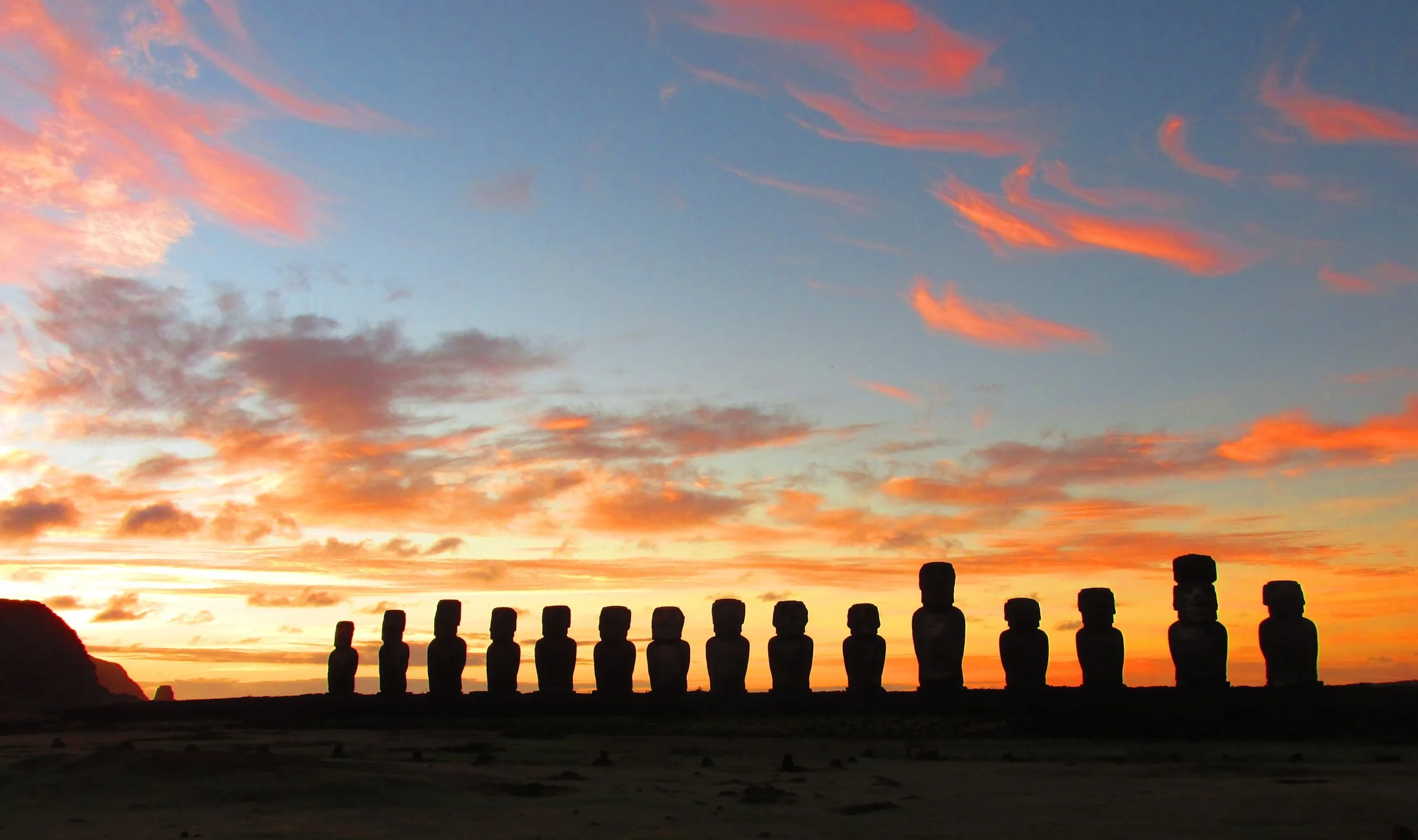Chile: Easter Island
When I was 11, my mom gave me a copy of the book The Kon-Tiki Expedition: By Raft Across the South Seas. It details the adventures of a group of intrepid Norwegians trying to sail from Chile to Easter Island on a balsa wood raft, in an attempt to prove that that is how the Easter Islanders arrived on a tiny speck of rock in the Pacific. It wasn’t - but it was still an amazing journey. Also, when my parents wonder why I’m constantly visiting remote places, maybe they should just be grateful I’m not getting there on a balsa wood raft.
Easter Island is incredibly remote. It is over 2000 miles from mainland South America. Even the nearest inhabited island is 1200 miles away. It is also quite small, just 15 miles by 12 miles at the largest points. I rode a horse up to the highest hill (500 meters) and could see almost the entire island, and beyond, water in all directions.
The island is famous for its plethora of enigmatic stone statues, called moai. They were carved hundreds of years ago at a quarry on the island and transported (nobody is precisely certain how) to various sites around the island. You can visit the quarry, as well as a number of ahu (horizontal plinths) topped with moai on a tour or rent a car and drive yourself around. Other historic sites include hidden sea-caves with painted symbols and the hill-too ceremonial village of Orongo.
Ceremonial village of Orongo
Cave paintings - perhaps from the Bird Man cult...
The wisps of information we do have about the early settling of Rapa Nui (the Easter Islanders’ name for the island, meaning “navel of the world”) are fascinating, though much has been lost as the population was decimated and oral history was forgotten. A battle between the upper class and the lower class, the rise of a new religion called the Bird Man cult, deforestation and ecological collapse... It sounds like the stuff of an epic movie, and one Hollywood mogul was happy to answer the call. That mogul? Kevin Costner.
Yes, that Kevin Costner. In the 1990s he came to the island and filmed a historical drama that is extremely loosely based on the history of the island. Many locals still speak fondly of “Kevin,” including the guy who rented me the horse. “You know Kevin Costner? Robin Hood? I showed him around. Nice guy!” The movie flopped in theaters but was still being shown 3 times a week at one of the hotels on the island when I visited several years ago.
View from the highest point on the island. That was my horse - pretty sure that horse met Kevin Costner.
This is the South Pacific, and so of course a remote island has a perfect white sand beach. And while the water is incredibly clear, it’s relative lack of nutrients mean there usually aren’t large numbers of fish. Luckily for us scuba divers, some enterprising soul sunk a replica of a moai off-shore to enliven our underwater experience.
If you go: Most visitors seemed to be on a 2-days-2-nights visit schedule. While you could easily cover all the major sites in that amount of time, I stayed for 4 days and had a nice leisurely time exploring a number of remote ahus as well as popular sites like Orongo village and the quarry at Rano Raraku. Sunrise at Ahu Tongariki (the oceanside plinth with 15 moai that I have taken so many photos of) is a must. Many guided tours are offered, and having somebody to explain what we’ve gleaned of the history is valuable, but renting your own car for a day or two and visiting sites at your own pace is also worthwhile.
One of many toppled moai
I like the one in the jaunty cap - you do you, sir.
















